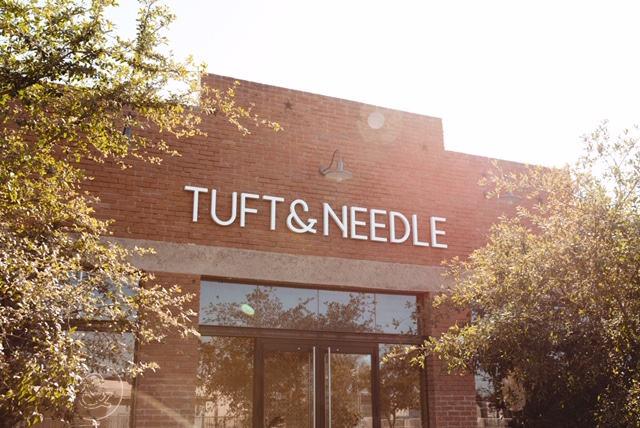
by Guest | Feb 21, 2020 | Community, sponsor
You may have heard that question at some point when you were building your business or starting up. USP stands for Unique Selling Proposition.
In very simple terms, why should I buy from you versus anyone else? What makes you different? Unique?
After presenting the “ ABC’s of Starting a Business workshop” for years, presented by SCORE Greater Phoenix, it is evident how many people do not have a clear focus on what their business is and who problems they solve and to whom are they solving those problems for. We hear extra filler junk, such as. “I am like the UBER of XXX.” So, what I heard is that you have a billion-dollar valuation, are in the debt over a billion dollars and have not been profitable and probably will never be profitable. Not good.
So how can you create your own very compelling USP?
Simple. Follow this simple formula and create your own USP. Think of it as your elevator pitch.
First, write down your target marketing Now you may have more than one, but not more than three. Why? Because if your message is trying to be everything to everyone, no one cares, and no one wants to hear it. They want someone to solve their problems-not the world’s. Be specific on who your market is. If it’s dentists, then what kind of dentist? Orthodontist? Periodontist? General? Oral? Etc.
Be specific. “My company works with orthodontists.”
Next, write down at least 25 problems your target customer has, then write down 10 more. This will really help in your business down the road. Identify the top 3 problems your target market has based on your list. How do you know what the top 3 problems are? Hopefully, you know why your customers are doing business with you. If not, ask them what problems/challenges your product/service solves for them. If you don’t have customers yet, then meet with a mentor to have them help you find those top 3 challenges. You also may know what 3 challenges you want to solve for your customers-but it must be in alignment with THEIR needs. I.E. Orthodontists problems are; patients not showing up for appointments, potential clients not having insurance to get braces (cost) and finding good staff.
Now write down at least one solution to each one of the problems you outlined in the last step. Be specific. Using our dentist as an example; send out email, text and voice mail reminders for the appointment, providing another insurance solution if they don’t have insurance, use a systematic process to hire great staff.
Let’s put your USP all together.
“My company works with elite orthodontists who have challenges obtaining new patients and attracting high level staff. We help them develop acquisition and retention strategies to build their practice and their team.”
You may be thinking, how did I get that USP from the exercise. It’s simple. THEIR problem is getting new patients in because they don’t have insurance, keeping patients and getting new staff. The USP says that in a language that is speaking to the orthodontist-not to anyone else. Now, if another type of dentist heard this, would they want to know more from you? Absolutely. You can alter your USP to your market.
I.E. “My company works with elite dentists who have challenges obtaining new patients and attracting high level staff. We help them develop acquisition and retention strategies to build their practice and their team.”
See how that works. You must speak to your audience. It’s NOT about you. It’s about who you serve, what are their problems and how are you solving them.
Stop being the Uber, Apple, Tesla, Google, or whatever other company you want to compare yourself to. They have their USP. Here are a few.
- Uber: Ride when you want, where you want
- Apple: We provide a lifestyle with our products
- FedEx: When your package absolutely, positively has to get there overnight
- Coke: The real thing
- Google: Access the world from your fingertips
You are NOT them. They have established themselves in the market, you are working on establishing yourself.
Speak to your audience, be unique, be you. They do not have to define their market; it has already been defined.
Create your USP today. Be clear.
This Blog is provided by SCORE Greater Phoenix, Steve Feld a SCORE Certified Mentor.
SCORE provides free one-on-one mentoring for entrepreneurs and small businesses, as well as free or low-cost workshops for small businesses in the Phoenix area throughout the year. Visit GreaterPhoenix.Score.org for information or contact Joyce Keane, Chapter Vice-Chair at [email protected].

by Guest | Feb 21, 2020 | Community, sponsor
You may have the most lucrative product or service, but how do you move from no one knowing about it to achieving great success in business? Networking for your small business is an integral part of marketing and promoting what you offer. Networking is the next step of branching outside of the office, meeting new people and forming new relationships.
Networking can be a cost-effective way to find meaningful connections for you and your business. Not all networking for your small business is the same. There are varying types of networking events. Some events consist of open networking, which allows attendees to mingle and have conversations. It is important in open networking events that you don’t do all the talking. To learn more about other attendees’ businesses, ask more questions before you share about yourself. Active listening and asking questions tells the other person you’re engaged in what they have to say.
Forming a relationship is more valuable than exchanging business cards when networking. There are more organized networking groups, often called leads or referral groups. These groups tend to meet often, usually weekly, and are more structured. These groups include an agenda and introductions of each member’s business. Often these groups emphasize active participation by setting requirements for all members to continually pass along business leads. Some networking groups also have a business spotlight, which highlights a member’s business for that week.
Utilizing this spotlight, it is a perfect opportunity to share in-depth details about your business and share what type of connections you are looking for. The old adage “It’s not what you know, but who you know” is absolutely true when it comes to building a successful business through networking. To grow your small business quickly, you will need to have a strong source of relevant connections in your network whom you can call on when you need them. Networking can open the door to talk to highly influential people you wouldn’t otherwise be able to easily talk to or find.
Attending a new networking group can be daunting. When planning out your calendar for networking events, especially ones you are trying for the first time, think ahead of who you are trying to connect with. Meeting every single member in the room is not manageable, especially at an open networking event. Walking away with two or three new strong connections is far more valuable. To continue to grow relationships, plan to follow up with all new connections immediately. Send an email, call them and, potentially, set up another time to continue the conversation. To be successful with networking, connections must be mutually beneficial.
Be reciprocal by introducing your new connection to your network. Finding the right networking group requires commitment. Start your new year right by attending a new networking group each week for the next month. Allow yourself time to find the networking group that works best for you and your business. Once you find that right network, the growth of your business is sure to come.
This article was written by Jodi Towns, ASBA Director of Partnership Development & Marketing.
[email protected] (602) 306-4000

by Guest | Feb 19, 2020 | sponsor
If you’ve ever been brave enough to share your amazing new business idea with a friend or family member, you’ve undoubtedly been met with a hesitant head tilt and the start-up skeptic’s favorite refrain: You know, 50% of new businesses fail by their fifth year.
They mean well.
They’re only worried about your wellbeing. But their lack of faith isn’t
totally unfounded. Making it out of the fifth year with your head still on
straight is a feat worth celebrating. But making it out of the sixth year, now that’s a little more
complicated. By year six, you’re a seasoned team that’s making its way out of
scrappy start-up and into an established business. You’ve figured out your
market, your product, and you’re rolling full speed ahead—that’s when the real
trouble begins.
Here are the five things you’ll
have to figure out in your sixth year of business.
1. You’ll have to navigate a Big Problem.
We went from a
single mattress in 2012 to an entire bedroom’s worth of products by 2017—and a
large portion of those products were launched in a 12-month period. Scaling at
this speed can cause a lot of gaps in product quality, and other issues we
hadn’t encountered previously. We saw this manifest in a few products, from
adhesive issues in our core mattresses to a stressful product recall. We knew
we had a huge problem to tackle or risk the satisfaction of our customers.
At the height of
these issues, our box foundation return rate was skyrocketing, and we couldn’t
figure out why. We had sourced the best of the best, we thought, but customers
clearly didn’t agree. A missed step in the feedback process between our CX and
Ops teams was preventing us from being about to get to the real issue—which
cost time, money, and worst of all, our customers’ trust. It turned out, after
a lot of investigating, that the plastic pins used to hold our foundation
together were breaking easily, creating a poor customer experience.
We asked our Superior Quality Manager, Garrison Mills, to weigh in on the takeaways from such a difficult to solve the problem. “You can have all of the data in the world, but it doesn’t do you much good if you don’t catch a trend soon enough. After we experienced the wave of box foundation issues, we started creating internal, real-time dashboards to alert us the moment a defect began to trend upward. This has been a big step forward for us in being able to react quickly to these issues when they come up.”
Additionally, we began building external-facing dashboards that, in some cases, were even better than the systems our vendors were using for their own quality management and assurance. Many were hardcoding the weekly data we sent into their own QMS, which resulted in data-fidelity problems. Creating external dashboards eliminated manual data entry by their teams and ensured that they were seeing exactly what we were seeing when we were seeing it.”
2. You’ll have to completely reconsider your strategy.
What works in the
first few years might start to shift once you’re a more established business.
We’ve faced two major challenges that any brand can relate to, and we’re still
navigating them as we learn.
Our competitive landscape rapidly changed. When we started, we were the first of just a few big names out there, but by our second and third years, there were dozens of copycat mattress-in-a-box companies on the internet. We knew our product offering was unique, but the customer couldn’t see it through a sea of similar information and images. We’ve had to constantly rethink how we present our products, and we’re still trying to get above the noise.
We also had to shift our retail strategy. We crafted a very hands-on experience with our product, including a personal guide in a private showroom. Customers would walk into our downtown Phoenix or San Francisco showrooms and wade through a thick crowd, just to be quoted a wait time. We wanted to do things differently when it came to mattress shopping, but we realized the wait times to see our product were creating a worse experience, not a better one. It took many iterations and customer feedback to hone in on our current experience, and we aren’t married to the way things have settled now, either.
Learning to be
flexible, open to new ideas, and above all, open to customer feedback, is a
lesson that takes you from a two-year burnout to a 10-year veteran business.
3. You’ll underestimate yourself.
When we launched
our Mint Mattress, our second mattress design, on Black Friday of 2017, we
weren’t prepared for the reception we got. After forecasting, getting all of
our product assets together, and sending one simple email announcement, we
planned to sell about 500 units.
We sold 6,500 that weekend
alone.
That sounds like great news, right? What a success! But we were woefully unprepared for the backlog the demand for the Mint created with our manufacturers. Shipping was delayed, we
didn’t have the
product itself back in stock until February of 2018, and our CX team was left
to answer a lot of (rightfully) upset customers.
We can’t say it
was the last time we underestimated our own products, but we learned a huge
lesson—when you design a mattress specifically based on customer feedback about
your already popular mattress, be prepared for it to sell.
4. You’ll have to make painful decisions.
At a certain
point in your business, revisiting roles is important. No one ever wants to lay
people off, and we had successfully avoided it in our first five years.
However, it became clear as we reorganized and grew that some roles had become
redundant. Some people weren’t fulfilled by their job any longer, and some
teams didn’t make sense, no matter how much we loved the people on them.
Handling a layoff
or restructure requires a lot of empathy, a lot of transparency, and a lot of
patience. It’s important to honor the work your team members have put in, but
when the time comes, having those tough conversations is a vital move to take
your company to the next stage.
5. You’ll make an expensive move that might not pan out.
We’ll keep this
one brief for a lot of reasons, but there’s still a lesson to be learned here.
In 2016, we got involved in dueling ad campaigns with a competitor. Things got
pretty heated, and soon we found ourselves in a lawsuit. More importantly than
any legal significance, the end result didn’t have the impact we hoped for with
our customers, the campaign seemed to be more interesting to industry insiders
than to consumers. Sometimes, the move that feels right at the time isn’t one
that your customers care about in the end—maintaining their happiness is a
better long-term focus.
We’re cruising
ahead toward that 10-year mark, and we’re excited to see what challenges we
face in year eight, nine, and beyond. Tuft & Needle was founded to be one
of the 100-year companies that customers can’t stop talking about. We’ve made
our fair share of mistakes, but we always come away from them with a new lesson
to apply to the next problem.
When your friend parrots that 50% statistic back to you, remember that there’s a reason half of businesses do make it beyond the five-year mark. Study their failures, let their successes inspire you, and if you’re executing on the right idea, you’ll stand the test of time.
Tuft & Needle is an American direct-to-consumer mattress and bedding brand owned by Serta Simmons Bedding. The company was founded on July 19, 2012 by Daehee Park and John-Thomas Marino in Phoenix, Arizona.

by Guest | Feb 17, 2020 | sponsor
By Kira Morgan, Big Yam Agency
No, not the political kind, (that’s the Bern, not the burn) but the sort of burn you feel from burning the candle at both ends. (Explaining the joke only makes it funnier- right?)
Most of us won’t admit it but there comes a time when the pressure is on at work. You can’t seem to meet deadlines, there’s too much to accomplish in the day and not enough time. Every day there seems to be a crisis. You don’t mean to, but you find yourself getting testy with co-workers, you can’t seem to get out of bed in the morning, and every day is a struggle. But what are we taught to do? Put on a brave face, throw on the cape and become the office superhero.
Well, I’m here to tell you, everything is going to be okay and you are not alone! You may be suffering from work “burnout,” a condition that is now officially recognized by the professional health community. And while most may consider burnout just a term, it is officially a medical condition that occurs when chronic workplace stress is not being successfully managed.
WORK BURNOUT IS REAL
According to The World Health Organization, “Burn-out is a syndrome conceptualized as resulting from chronic workplace stress,” and is characterized by the following:
- Feelings of energy depletion or exhaustion
- Increased mental distance from one’s job, or feelings of negativism or cynicism related to one’s job; and
- Reduced professional efficacy
RECOGNIZE THE SIGNS OF WORK BURNOUT
According to Very Well Mind, if you are experiencing any of the following at work, you may be at or on the verge of burnout.
- No interest in work-related activities
- Feeling drained, lack of energy to get work done
- Difficulty concentrating and lacking creativity
For more information, visit https://www.verywellmind.com/stress-and-burnout-symptoms-and-causes-3144516.
CAUSES OF WORK BURNOUT
According to a 2018 report by Gallup, employee burnout has five main causes:
- Unreasonable time pressure: Employees who feel they do not have enough time to do their work are at a higher risk for burnout.
- Lack of communication and support from a manager: Employees who feel strongly supported by their manager are 70 percent less likely to experience burnout on a regular basis.
- Lack of role clarity: Only 60 percent of workers know what is expected of them. Those that do not know may become exhausted simply trying to figure out what they should be doing.
- Unmanageable workload: When the workload feels unmanageable, feeling overwhelmed can quickly lead to burnout.
- Unfair treatment: Employees who feel they are treated unfairly at work are 2.3 times more likely to experience a high level of burnout. Situations such as favoritism, unfair compensation and mistreatment from a co-worker all fall under this.
ADDRESSING WORK BURNOUT
Most of us have experienced work burnout at one time or another, but the good news is that it is hopefully temporary and reversible! By making some changes, you can help regain control of your life and mental well-being. Here are some of my personal suggestions:
- Plan and take a vacation
- Take a mental health day off
- Exercise before work
- Eat healthier
- Find a hobby to enjoy outside of work
- Take regularly scheduled breaks from your desk (go for a walk, etc.)
- Tune out and listen to some music
- Do some breathing exercises
- Get a massage
- Talk to your boss and/or HR
- Change your attitude
If you are still unsure if you may be experiencing work burnout, visit https://www.stress.org/workplace-stress and take the survey. Hopefully, the above methods, and recognizing that you are not alone, will help create a happier and healthier workplace environment.
Still in need of other ideas? Check out our blog on 5 Healthy Habits That Will Boost Your Productivity at Work.

by Guest | Feb 17, 2020 | sponsor
Guest post by: Industrious
The market for
flexible workspace has grown significantly over the past decade, catching the
attention of startup companies and enterprise-level businesses alike. Today,
flexible workspace is becoming the norm for many employers. Here are three
benefits of flexible workspace:
Flexibility
The elastic
terms provided by a flexible workspace provider gives tenants the ability to
scale as their needs change. This means a company can grow into a private
office, or multiple private offices, as well as scale within the same building,
all without having to change addresses.
Flexible
workspaces can also reduce the burden of high upfront capital costs and fixed
expenditures — giving your company more cash on hand.
Amenities
As the
competition for top talent heats up, companies must adapt their workplaces in
response to changing demands and expectations of employees. Flexible workspaces
offer a wide range of hospitality-focused services
and amenities — from a welcoming reception area and dedicated community manager to daily
snacks and refreshments — creating a warm, welcoming atmosphere and positive
workday experience for all employees.
Community
Flexible
workspaces also give tenants access to a supportive community of other business
professionals to work around. This means companies and their employees have
endless opportunities to network and socialize with other members — both
throughout the workday and during community programs and events.
Adopting a
flexible workspace can save you time and money, accelerating move-in time while
reducing capital expenditures and operational costs. Flexible workspaces can
also provide you with the flexibility, amenities, and community that a
traditional office lease and space cannot.
So what do you have to lose?
Exclusive Offer
Industrious is
offering the PHX Startup Week community up to $1,000 toward their next office
space. Simply submit your information here then book your tour.
Refer and Earn
Not in the market for office space now, but know someone who is? Refer them to Industrious and earn.





